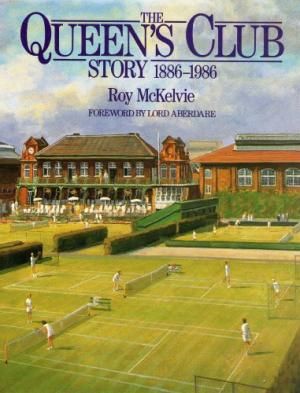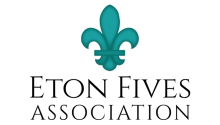
A Kangaroo at Queen's - The Queen's Club Story 1886-1986
An extract reproduced by kind permission of the author Roy McKelvie
Kenneth Gandar Dower, whose astonishing versatility ranged through most moving ball games to racing Cheetahs and big game hunting was captain of Eton Fives at Cambridge, where he was a scholar, and in the Rugby Fives team for three years. According to a contemporary writer he had, when at his best, no superior at Eton Fives and, at Rugby Fives, was original and 'really good'.
In one Varsity match an opponent was heard to remark 'I give up: it's no good playing against a Kangaroo!' The writer added 'As a doubles player he was less effective, as his partner could never quite know where he would be.' Gandar won the Kinnaird Cup twice with George McConnell and the amateur singles championship at Rugby Fives once.
The story of Eton Fives at Queen's is brief and sketchy. The game flourished there in the thirties and for a couple or so years the Club became the HQ of the Eton Fives Association. The first recorded committee meeting was held there in November 1934 and the last two years later. There were two courts, one built before the First World War, the other between the wars. The first, an open one, was at the end of No 2 real tennis court adjoining the Cottage. The second was close to No 3 Covered Court beyond the second squash court. It had a glass roof and electric light. Neither survived the last war.
In December 1936 A J Conyers, a leading player and member of the EFA committee wrote to the Club suggesting that the old court, in poor condition and out of action, should be brought back into commission and provided with a glass roof and lighting and that the Association should re-imburse the Club to the tune of £25 a year. In return the Association's members should have the right to use both courts at all times. The cost of the work was not expected to exceed £175 but it was agreed that estimates should be obtained. In return the Club asked for a guarantee of £25 a year for ten years apart, of course, from the court fees. This seemed to have caused relations between the two sides to become strained.
In 1938 the EFA complained to Colonel Eyre Bruce, the Club secretary, about the dirty condition of the courts and received an apology. Obviously something was done, as the courts were booked for the Kinnaird Cup, the game's leading Competition, in February and March 1939. The event took place, Howard Fabian and J K G Webb of the Old Cholmeleians beating George McConell and Willie Welch of the Old Harrovians in the final. That was the end of Eton Fives at Queen's.
When the war ended Lord Aberdare, chairman of the Club's Board of Directors and holder of the purse strings, refused to consider rebuilding the courts until the War damage claim was settled, despite the proposal by the EFA and Jesters Club to pay half the refurbishing costs. With the Club in its usual parlous state nothing was done and interest lapsed.
Some distinguished games players appear among the winners of the Kinnaird Cup in the years it was played at Queen's. Howard Fabian for instance played soccer and cricket for Cambridge, soccer for England and Derby County. He won the Cup twice with Webb and once with J. Aguirre. He won it a fourth time after the war, with Webb.
Alan Barber, another double blue, one of the last great Corinthians and Yorkshire cricket captain, won it twice with his fellow Salopian, Desmond Backhouse, a leading squash player. Barber was also headmaster of that famous prep school, Ludgrove, one of the few in this country to possess an Eton Fives court. In those days Harrow, Shrewsbury, Highgate and Eton were top dogs.
